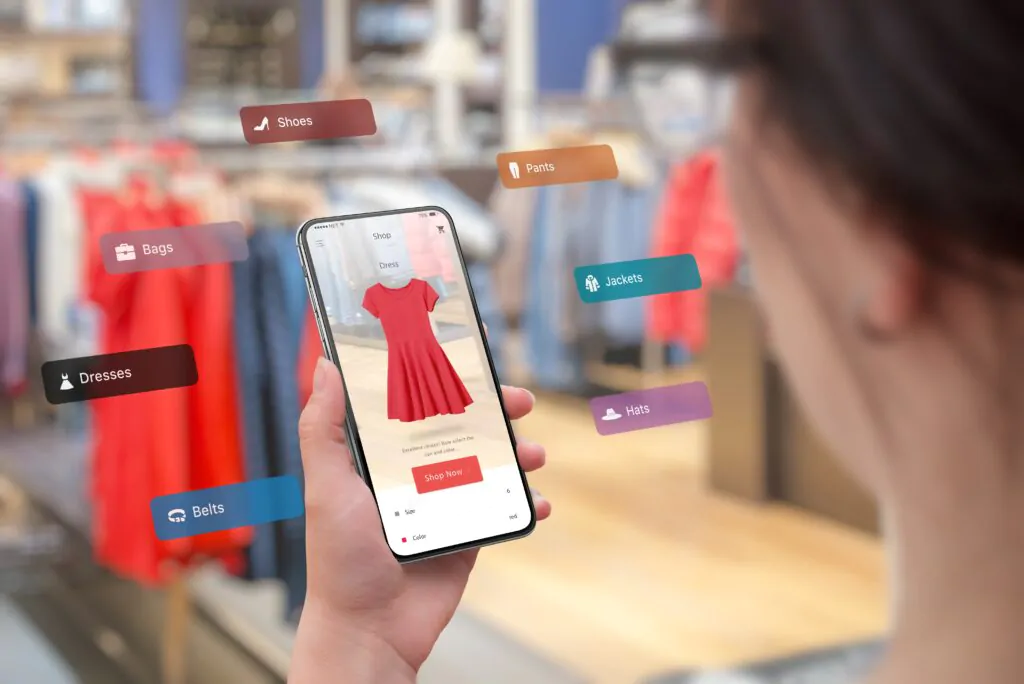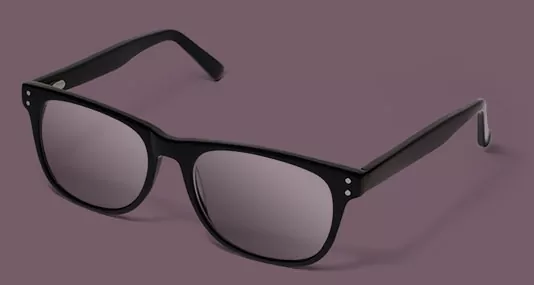3D configurators have revolutionised the e-commerce landscape by allowing customers to engage with products more deeply than ever before. Unlike traditional e-commerce, which relies on static images, 3D configurators provide a fully interactive model. Customers can change a product’s colour, texture, and components in real time, seeing their customisations come to life in a 3D space. This not only aids in visualising the product more clearly but also supports decision-making, increases customer satisfaction, and lowers the likelihood of returns.
Advancements in technology have made 3D configurators more accessible, enabling various industries to offer customised experiences. From automotive to furniture and fashion, these tools are setting a new standard for how products are presented and customised online.
Benefits of Using 3D Configurators:
- Customer Engagement: Interactive visualisation increases time spent on site.
- Sales Conversion: Businesses see an uptick in sales conversions thanks to detailed customisation options.
- Return Reduction: Clear, accurate 3D models lead to fewer product returns.
Key Statistics:
- Engagement with 3D configurators can boost time on site by up to 40%.
- Retailers report a 30% increase in conversion rates when incorporating 3D configurators.
- Product returns can be reduced by up to 25% through precise visualisation.
3D configurators are a powerful tool in the digital retail space, offering businesses a way to provide personalised, interactive shopping experiences. Their ability to decrease returns and increase customer satisfaction marks them as an essential technology for any forward-thinking e-commerce strategy.
Related Read: How to Get a Quote for Software Development Services?

TL;DR: Revolutionising E-Commerce with 3D Configurators
This article delves into the world of 3D configurators, showcasing their role in enhancing online shopping through interactive product customisation. With Futura3D leading the innovation, businesses across various industries can now offer personalised shopping experiences like never before.
- What Are 3D Configurators? Tools that allow customers to customise and visualise products in 3D before purchasing.
- How Do They Work? Utilising detailed 3D models, configurators let users interact and modify products in real-time.
- Benefits: Increases engagement, boosts sales conversions, and reduces returns.
- Choosing the Right Platform: Futura3D stands out for its ease of use, cost-effectiveness, and superior model quality.
- Applications Across Industries: From automotive to fashion, 3D configurators are transforming customer interactions.
Discover how embracing 3D configurators can propel your business into the future, offering an unmatched shopping experience that not only meets but exceeds customer expectations.
What Is A 3D Product Configurator?

How 3D Configurators Work
3D configurators utilise detailed 3D models of products, allowing users to interact with and customise products in real time. This interaction is facilitated by sophisticated software that updates the product’s appearance based on user selections.
The operation of a 3D configurator begins with the creation of a detailed 3D model, typically using Computer-Aided Design (CAD) software. These models are then integrated into the configurator platform, which is embedded in a website or application. As customers select different customisation options, such as colour, material, or features, the configurator software updates the 3D model in real time to reflect these choices.
This seamless process is powered by advanced visualization engines that render the changes quickly and accurately, ensuring a smooth and engaging user experience. The configurator interface is designed to be intuitive, allowing even those with no technical expertise to design their personalised product with ease.
The following table outlines the typical steps a user might take when using a 3D configurator:
| Step | Action | Description |
| 1 | Choose Product | Select the base product to customise. |
| 2 | Select Customisation Options | Choose from a variety of options such as colour, material, and size. |
| 3 | Visualise Changes in Real Time | See the customisations applied instantly to the 3D model. |
| 4 | Review and Modify | Make further adjustments as needed, reviewing the product from different angles. |
| 5 | Confirm Selection | Finalise the design and proceed to purchase. |
The technology behind 3D configurators not only enhances the shopping experience by providing a realistic view of customised products but also streamlines the decision-making process, leading to increased satisfaction and reduced returns.
3D configurators represent a bridge between customer imagination and real-world products, powered by sophisticated CAD software and intuitive design interfaces. This technology plays a crucial role in modern e-commerce, allowing for an unparalleled level of product personalisation and visualisation.
What is the Difference Between 3D Configurators and Product Visualisers
The primary difference between 3D configurators and product visualisers lies in interactivity. While product visualisers display products in 3D without user modification options, 3D configurators allow users to customise products in real-time, offering a more dynamic and engaging experience.
Users can modify aspects such as colour, material, and features based on available options, with each choice instantly reflected on the 3D model. This not only aids in visualising how the final product will look but also significantly enhances user engagement and satisfaction by involving them in the creation process.
3D Configurators vs. Product Visualizers
| Feature | 3D Configurator | Product Visualizer |
| Interactivity | High (users can make real-time changes) | None (static 3D model) |
| Customisation Options | Extensive (colour, material, features) | Not applicable |
| Engagement Level | High (involves users in the design process) | Moderate (provides a detailed view) |
| Use Case | Ideal for customisable products | Best for showcasing non-customisable items |
| Impact on Decision Making | Significant (users see their customisations) | Limited (users only view the product) |
| Technological Complexity | Higher (requires advanced software) | Lower (simpler 3D rendering) |
Through this comparison, it’s evident that while both tools enhance the online shopping experience by leveraging 3D technology, 3D configurators offer a richer, more interactive experience by enabling personalisation. This distinction is crucial for businesses considering which tool to implement based on their product offerings and customer engagement strategies.
Choosing between a 3D configurator and a product visualiser depends on the level of interaction and customisation a business wants to offer its customers. While visualisers provide a solid understanding of a product’s look, configurators invite customers into the creative process, potentially leading to higher engagement and satisfaction levels.

The Advantages of Implementing 3D Configurators
Implementing 3D configurators offers significant advantages, including enhanced customer engagement, increased sales conversions, and reduced product returns. These interactive tools allow for a deeper understanding and personalisation of products, leading to a more satisfying shopping experience.
The adoption of 3D configurators in e-commerce platforms has transformed the online shopping experience by providing customers with an unparalleled level of interaction and customisation.
Key Advantages:
- Personalisation at Scale: Offers customisation options without the need for physical samples.
- Immediate Visual Feedback: Customers see their customisations in real time, enhancing decision confidence.
- Wider Reach: Enables businesses to offer customisable options globally without geographical limitations.
Impact on E-commerce:
- Engagement: Users engage more deeply with products, increasing brand loyalty.
- Conversion Rates: Businesses report up to a 30% increase in conversion rates with the use of 3D configurators.
- Return Rates: The clarity provided by 3D configurators can lead to a reduction in product returns by up to 25%.
The implementation of 3D configurators not only elevates the customer shopping experience by enabling real-time product customisation but also offers substantial benefits to businesses. From enhancing user engagement to boosting sales and reducing returns, the advantages of incorporating 3D configurators into e-commerce platforms are clear. This innovative tool is reshaping the landscape of online retail, setting new standards for customer interaction and personalisation.
Challenges and Pitfalls of 3D Configurators
Implementing 3D configurators presents challenges such as the need for high-quality 3D models, the risk of performance issues on low-bandwidth connections, and the necessity for intuitive user interfaces. However, platforms like Software Development UK’s Futura3D platform are specifically designed to address these fundamental issues, providing optimal solutions for an enhanced user experience.
While 3D configurators offer transformative benefits for e-commerce, their deployment comes with its set of challenges. Key among these are the creation of high-quality 3D models, ensuring smooth performance across varying internet speeds, and designing user interfaces that are both engaging and easy to navigate. Each of these factors plays a critical role in the success of a 3D configurator.
Futura3D, as a next-generation platform, is engineered to tackle these challenges head-on:
- High-Quality 3D Models: Futura3D greatly simplifies the creation of detailed and realistic 3D models, streamlining the process without compromising on the quality. This ensures that products are presented in the best possible light, enhancing the visualisation experience for customers.
- Optimised Performance: Recognising the diversity of users’ internet speeds, Futura3D is optimised for performance across a broad spectrum of bandwidths. Futura3D models are minute in size and do not compromise quality!
- Intuitive User Interface: The platform prioritises a user-friendly interface, making it straightforward for customers to customise products to their liking. This ease of use significantly improves engagement and reduces the learning curve for new users.
- Cross-Platform Compatibility: Futura3D guarantees seamless functionality across various devices and browsers, extending its reach and accessibility. Rigorous testing ensures that users have a consistent experience, regardless of how they access the configurator.
while the adoption of 3D configurators introduces several challenges, the Futura3D platform provides comprehensive solutions that address these issues effectively. By focusing on quality modelling, performance optimisation, user-friendly design, and compatibility, Futura3D stands out as the optimal choice for businesses looking to deliver the best possible experience with their 3D product configurators.


Discuss Your Project Today
How Much Do 3D Configurators Cost?
The cost of 3D configurators can be significant, particularly with industry-leading solutions. However, Futura3D offers a cost-effective alternative, delivering superior user experience and efficiency at a fraction of the cost. We invite businesses to enquire about a demonstration to explore how Futura3D can facilitate the adoption of a 3D configurator tailored to their needs.
The investment in 3D configurator technology varies significantly across the market, primarily influenced by the product’s complexity, desired level of customisation, and the chosen platform’s capabilities. Futura3D emerges as a game-changer by offering an affordable, high-quality solution designed to overcome the common challenges associated with deploying 3D configurators.
Futura3D vs. Industry Leading Configurator Solutions
| Feature | Futura3D | Industry Leading Solutions |
| Cost | Significantly less than the competition | More expensive (cost per view, commission, etc) |
| User Experience | Enhanced UX with intuitive design | Varies; many may have complex interfaces |
| Model Creation/Import Cost | Streamlined; easy and efficient import and creation tools | Often higher due to complex 3rd party software needs |
| Web-Based Modelling | Yes; accessible from anywhere | Not supported. |
| Model Weight | Super lightweight; fast loading | Much heavier models; slow loading |
| Model Fidelity | High fidelity for detailed visualisation | A compromise between fidelity and load time |
| Dynamic Performance | Ability to adjust model performance/fidelity | Limited flexibility in most solutions |
Futura3D’s approach to 3D configurator deployment emphasises cost-efficiency, user accessibility, and high-quality visualisation. By offering a platform that reduces the cost to create or import models, ensures models are lightweight for instant loading, and maintains high fidelity for an impressive user experience, Futura3D stands out as an optimal solution for businesses aiming to leverage 3D configurator technology without the traditional high costs.
As businesses seek to enhance their online presence and offer customers a more interactive and personalised shopping experience, the choice of a 3D configurator platform becomes critical. Futura3D represents a significant advancement, providing a cost-effective, high-quality alternative to traditional industry leaders. We encourage interested parties to reach out for a demonstration and discussion on how Futura3D can support their journey towards adopting 3D configurator technology, ensuring an optimal balance between cost, user experience, and visual quality.
How to Create 3D Models of My Products?
Traditionally, creating 3D models for products required expertise in complex CAD software like 3D Studio Max or Blender, limiting this task to experienced CAD modellers. In contrast, Futura3D introduces an intuitive and easy-to-use approach with its 3D painter technology, allowing anyone to create detailed 3D parametric models without prior experience.
The journey to integrating 3D models into an e-commerce platform has historically been a challenging one, necessitating a high degree of skill in using professional CAD tools. These tools, while powerful, present a steep learning curve, making them inaccessible to novices or those without a background in 3D modelling.
Futura3D revolutionises this process by providing a first-of-its-kind web-based 3D modelling tool. This innovation marks a significant departure from traditional methods, opening up the world of 3D modelling to a broader audience. With Futura3D’s technology, creating, parametrising, and deploying 3D models to a website can be accomplished within a single web-based platform, streamlining the entire process.
Transforming Model Creation with Futura3D:
| Traditional CAD Modelling | Futura3D’s Solution |
| Requires expert knowledge of CAD software. | User-friendly (proprietary) 3D painter technology accessible to all skill levels. |
| Complex tools with steep learning curves. | Intuitive web-based interface simplifies the modelling process. |
| Separate processes for creation, optimisation, and deployment. | Unified platform for creating parametric models and direct website integration. |
| High cost and time investment for model development. | Cost-effective and efficient model creation, optimising resources. |
The advent of Futura3D’s web-based 3D modelling tool represents a paradigm shift in how businesses approach the creation of 3D models for their products. By demystifying the modelling process and making it accessible to users regardless of their CAD expertise, Futura3D enables a wider range of businesses to benefit from the advantages of 3D configurators. This user-friendly approach, combined with the efficiency of a single integrated platform, positions Futura3D as an innovative leader in the field, ready to assist businesses in unlocking the potential of 3D product visualisation. Interested parties are invited to explore a demonstration and discuss how Futura3D can facilitate the adoption of 3D configurator technology tailored to their needs.

Need Expert Guidance?
We provide fully managed end-to-end solutions for operators and service companies needing expert guidance.
Take advantage of our unique {SD:UK} CTO as a Service solution. Our experts help you to formally capture requirements, create a system specification and then fully manage the implementation of your project for a successfull delivery.


Industry Applications of 3D Configurators
3D configurators have a broad range of applications across various industries, enabling businesses to offer customised and interactive product experiences. From automotive to furniture, fashion, and beyond, these tools are transforming how customers engage with products online.
The versatility of 3D configurators makes them a valuable asset for multiple sectors, facilitating a deeper connection between customers and products through interactive customisation and real-time visualisation. Here’s how different industries are leveraging the power of 3D configurators:
- Automotive: Car manufacturers use 3D configurators to allow customers to customise their vehicles, selecting everything from the paint colour to the interior finishes and additional features, enhancing the buying experience significantly.
- Furniture: Furniture retailers offer configurators for customers to visualise how various designs and colours will look in their own spaces, aiding in decision-making and increasing confidence in their purchases.
- Fashion: In the fashion industry, 3D configurators enable customers to customise garments and accessories, selecting fabrics, patterns, and styles to create a truly personalised wardrobe.
- Real Estate and Interior Design: These sectors use 3D configurators for virtual home tours and to customise interiors, allowing clients to select materials, finishes, and layouts for their properties.
Futura3D’s pioneering web-based 3D modelling tool is particularly well-suited to these industries, offering an intuitive platform for creating and deploying 3D models. This innovation not only simplifies the process of integrating 3D configurators into a business’s online presence but also enhances the user experience, making it more engaging and satisfying for customers.
Futura3D’s Impact Across Industries:
| Industry | Application | Futura3D Advantage |
| Automotive | Vehicle customisation | Simplifies complex model creation and offers high fidelity visuals |
| Furniture | Design and colour selection | Allows for instant visualisation of custom furniture in real environments |
| Fashion | Customisable garments | Enables detailed customisation, from fabric to fit, with realistic rendering |
| Real Estate | Virtual property tours | Facilitates immersive, customisable property walkthroughs |
The application of 3D configurators across various industries signifies a major shift in how businesses and consumers interact with products online. By providing a platform that bridges the gap between technical complexity and user-friendly design, Futura3D empowers businesses across all these sectors to adopt 3D configurator technology effortlessly. This capability to create, parametrise, and deploy models seamlessly makes Futura3D an invaluable partner for businesses looking to harness the full potential of digital innovation.
Choosing the Right 3D Configurator Platform
Selecting the appropriate 3D configurator platform is crucial for businesses aiming to enhance their online customer experience. The ideal platform should be user-friendly, cost-effective, and capable of producing high-quality, lightweight models for seamless integration and instant loading.
In the digital marketplace, the impact of a 3D configurator on customer engagement and sales is significant. However, the benefits can only be fully realised if the platform chosen meets the specific needs of the business and its customers. Here are key considerations when selecting a 3D configurator platform:
- Ease of Use: The platform should offer an intuitive interface for both creators and users, minimising the learning curve and facilitating the efficient design and deployment of models.
- Cost-Effectiveness: It’s important to evaluate the platform’s pricing model against the expected ROI. Consider both initial setup costs and ongoing expenses, such as maintenance and updates.
- Model Quality and Performance: The platform should support the creation of high-fidelity models that are also optimised for web performance, ensuring that they load quickly even on low-bandwidth connections.
- Customisation Capabilities: Assess the level of customisation the platform offers, ensuring it can accommodate the range of product variations your business requires.
- Integration and Compatibility: The configurator should integrate seamlessly with your existing e-commerce platform and be compatible across various devices and browsers.
- Support and Development: Look for platforms that offer robust support and regular updates, keeping the technology current and responsive to evolving business needs.
Futura3D excels in these areas, providing a next-gen solution that addresses the key challenges traditionally associated with 3D configurators. Its web-based 3D modelling tool allows for the creation, parametrisation, and deployment of models all within a single solution, simplifying the process for businesses of all sizes.
Why Futura3D Stands Out:
- User-Friendly: Futura3D’s intuitive design makes it accessible to users with varying levels of experience, from novices to experts.
- Cost-Effective: Offers a competitive pricing model that delivers value without compromising on quality or functionality.
- High-Quality Models (addresses fundamental industry challenge): Enables the creation of super lightweight yet detailed models for instant loading and exceptional visual fidelity.
- Dynamic Performance: Unique ability to adjust the performance and fidelity of models dynamically, ensuring optimal user experience across devices.
The choice of a 3D configurator platform can significantly influence the success of integrating interactive product customisation into an online retail strategy. Futura3D emerges as a premier choice by offering a comprehensive suite of features designed to enhance user experience, streamline model creation, and provide cost-efficient solutions for businesses aiming to leverage the power of 3D configurators.
Embracing the Future: The Transformative Power of 3D Configurators
In the evolving landscape of e-commerce, the integration of 3D configurators stands as a testament to the dynamic interplay between technology and consumer expectations. These powerful tools not only elevate the online shopping experience by offering unparalleled levels of interactivity and personalisation but also significantly impact business outcomes by enhancing customer engagement, increasing conversion rates, and reducing return rates.
There are many options available, Futura3D distinguishes itself as a next-generation platform that adeptly addresses the core challenges associated with deploying 3D configurators. Its emphasis on user-friendly design, cost-effectiveness, and the creation of high-quality, lightweight models ensures that businesses can offer their customers a superior online experience. Moreover, Futura3D’s innovative web-based modelling tool simplifies the process of creating and integrating 3D models, making the technology accessible to a wider range of industries and applications.
In summary, the transformative power of 3D configurators in enhancing the online shopping experience cannot be overstated. With platforms like Futura3D leading the charge, businesses are well-equipped to meet and exceed the evolving expectations of their customers, setting a new standard for digital retail innovation.
Further Reading:
For those looking to expand their understanding of 3D product configurators, visual commerce, and related technologies, the following resources offer valuable insights and guidance:
- “Visual Commerce: Leveraging 3D Visualization for Ecommerce Success” by Jenna Erickson
- This book delves into how businesses can use 3D visualisation to enhance their e-commerce platforms, offering practical advice on implementing visual commerce strategies.
- “Designing Interactive Systems: A Comprehensive Guide to HCI, UX, and Interaction Design” by David Benyon
- While not exclusively about 3D configurators, this book provides an essential foundation in human-computer interaction and user experience design, critical for developing effective 3D configurators.
- “3D User Interfaces: Theory and Practice” by Doug A. Bowman, Ernst Kruijff, Joseph J. LaViola Jr., and Ivan Poupyrev
- This book offers a comprehensive overview of 3D user interface design, including techniques and principles that can be applied to the development of 3D configurators.
- “E-Commerce and Web Technologies” by Christian Huemer and Tomaž Klobučar
- A collection of research papers and findings that include insights into the technological advancements in e-commerce, providing a broader context for understanding where 3D configurators fit in.
- “Augmented Reality in E-Commerce: Changing the Narrative” by Kunal Banerji
- Focusing on augmented reality (AR) in e-commerce, this book sheds light on how AR, alongside 3D configurators, is revolutionising the online shopping experience by offering immersive visualisations.
Frequently Asked Questions
Provided below is an FAQ to help you understand our services in more detail. If your question is not covered please feel free contact us.
Absolutely. 3D configurators can visualise service outcomes, such as interior design projects or customised travel packages, providing a tangible preview of intangible services.
By enabling precise customisation and reducing return rates, 3D configurators contribute to less waste and more sustainable consumption patterns.
Yes, many 3D configurators are designed to work seamlessly with VR/AR, offering an even more immersive customisation experience.
They can streamline production by providing accurate, customer-verified designs before manufacturing, reducing errors and waste.
Comprehensive support ranging from technical assistance during setup to ongoing help for optimising and updating the configurator.
Not necessarily. Platforms such as Futura3D are designed to be user-friendly, making it easy for those without technical expertise to create and manage 3D models.
The timeframe can vary based on complexity, but with Futura3D’s streamlined process, businesses can expect a quick and efficient integration.
Yes, most modern 3D configurators are mobile-friendly and can be integrated into mobile apps to enhance the user experience on smartphones and tablets.

